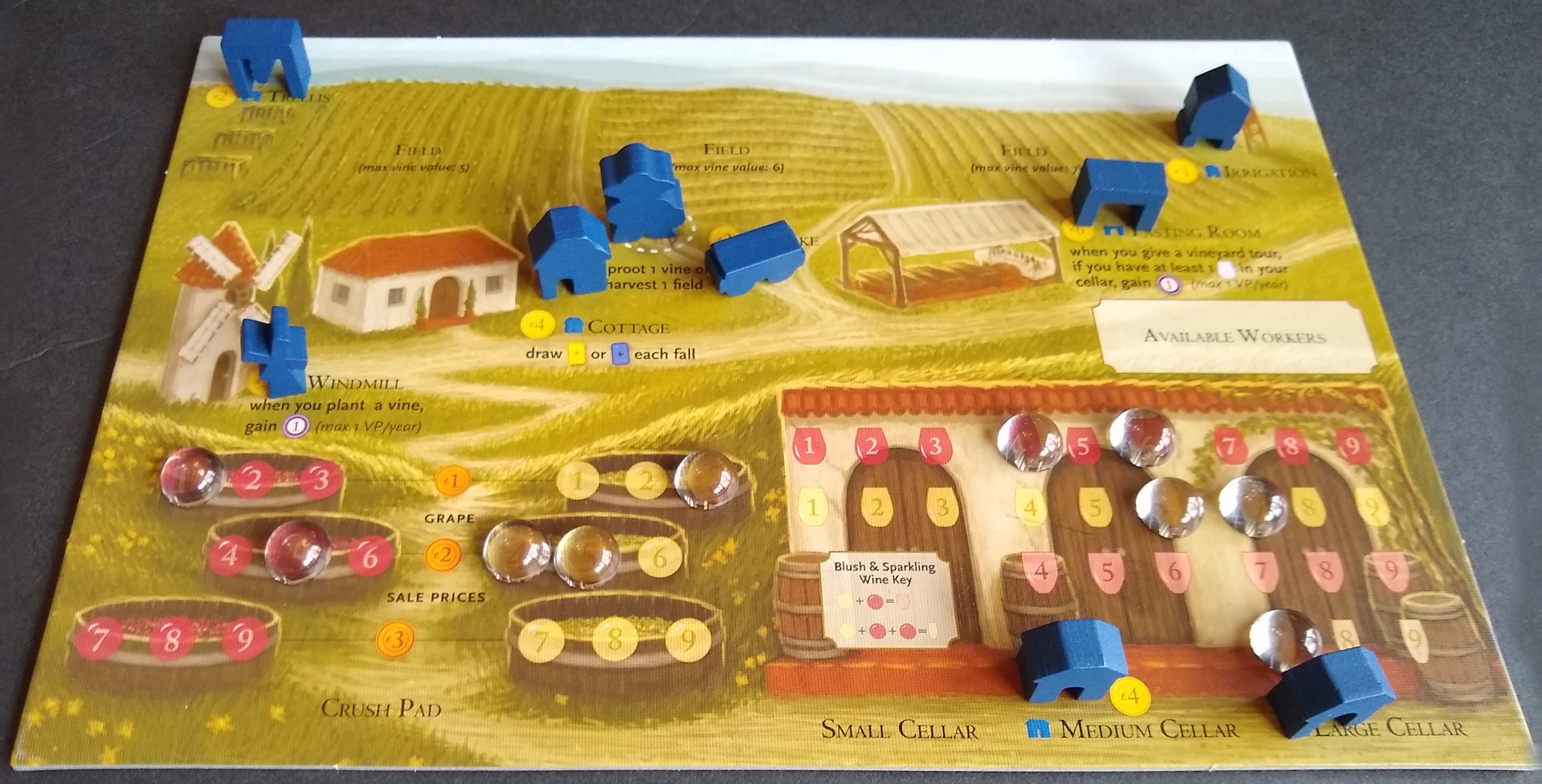This week’s post about the gold foil in an Elf Creek game got me thinking about ways to make a game sparkle. The reflection of light off the tiles in Merchants of the Dark Road causes the game to flash a bit when the viewer walks by, drawing attention to the game.
The effect reminded me of Viticulture by Stonemaier Games, which my sister- and brother-in-law gave me for my birthday last year. The game includes little glass beads, flat on one side, used to track grapes and wines–players slide them to the right to indicate that their products are aging in vats and barrels.
If the game were to have been released in the last century instead of 2012-2013, I think it probably would have included cubes instead. The little beads were an inspired break with the past. They concentrate light in certain directions by refraction (instead of reflection, as with Merchants), making the game flash as the viewer walks by. In addition, they lens the color of the mat beneath, thereby emphasizing whether the wine is white, red, blush or sparkling.
That got me wondering what other kinds of materials could be used to make a game sparkle. Here are a few items that I found. (I’ll avoid including pictures both for copyright reasons and to emphasize that I don’t endorse any particular vendor; this is more of a brainstorming list than a shopping list.)
All of the above could be used in different ways. Consider, for example, acrylic sparkle gems shaped to nest into the holes of a rotating game board. Imagine the sparkle!

Of course, there remains the need to match the components to the game mechanics and theme. There would be no point in making Viticulture’s meeples sparkle. They represent the industrious vineyard workers of Tuscany, who (I imagine) never sparkle when they work in the field.
It’s great, however, that we’ve moved far beyond the era when we only had cubes to represent resources and other objects. Panda, who made Viticulture, can inexpensively cut any small shape from birch. The main requirement for affordability is that each token needs to have no variation in its cross-section along its depth; in other words, all the sides need to be flat. (Similar to cutting a bread loaf, Panda cuts all the tokens from a long piece of wood carved with a uniform cross-section.)
Now, surely my list of sparkling components above is incomplete. What other components have you noticed that help a game to literally flash, reflect, refract, sparkle, glow or otherwise shine?

1 thought on “The Glass Beads in Viticulture Inspired 10 Ideas for a Glamorous Glisten in Games”